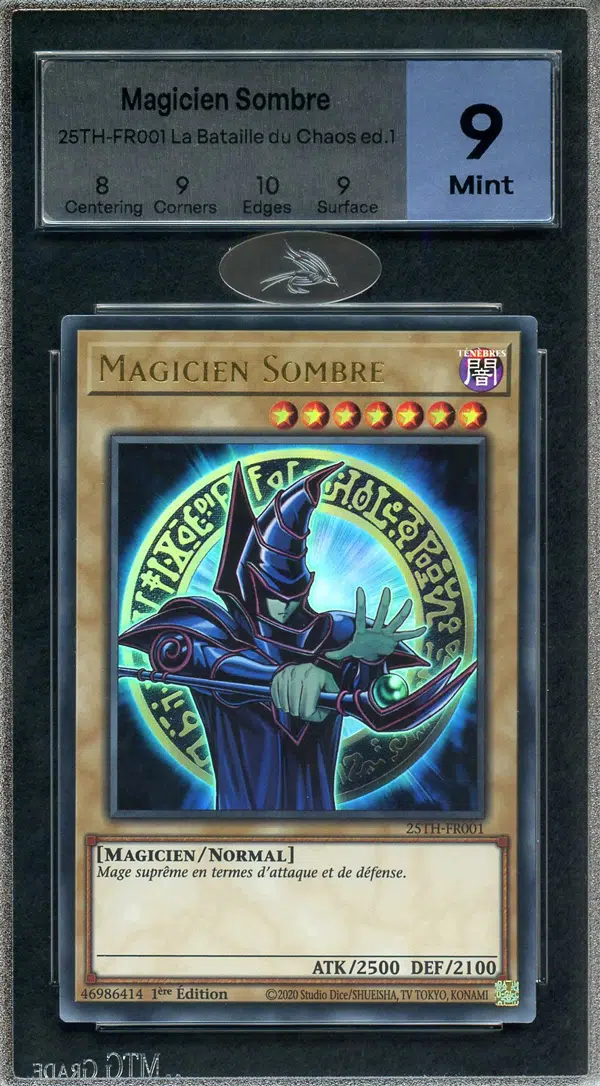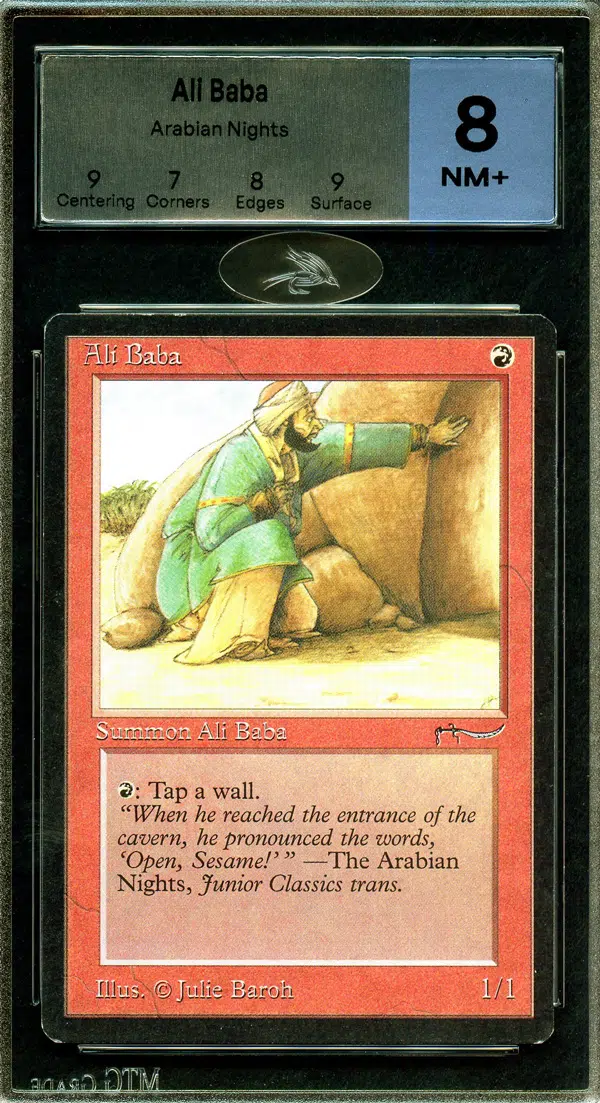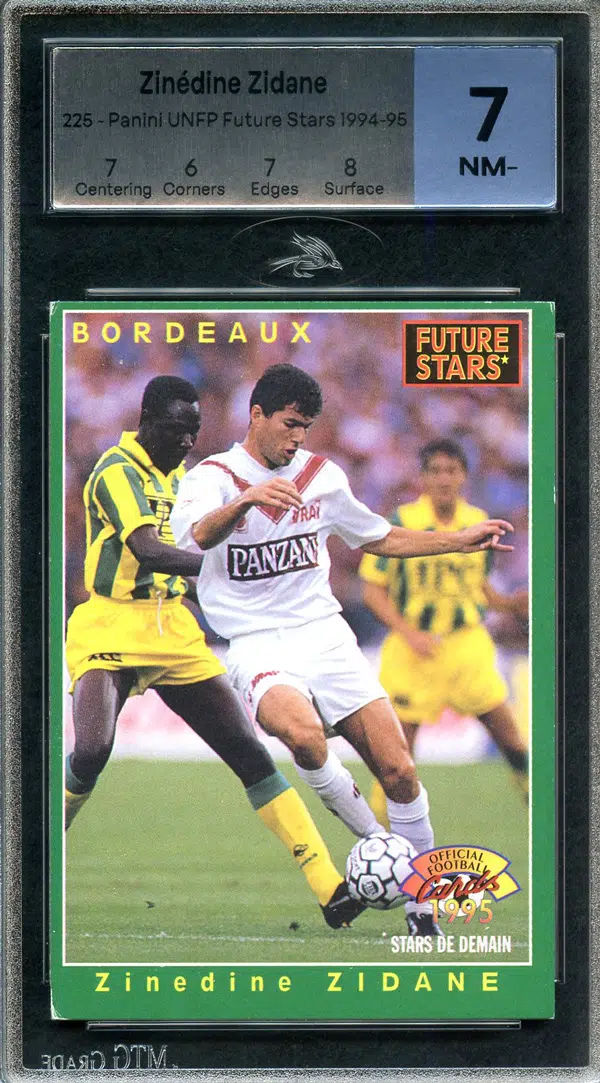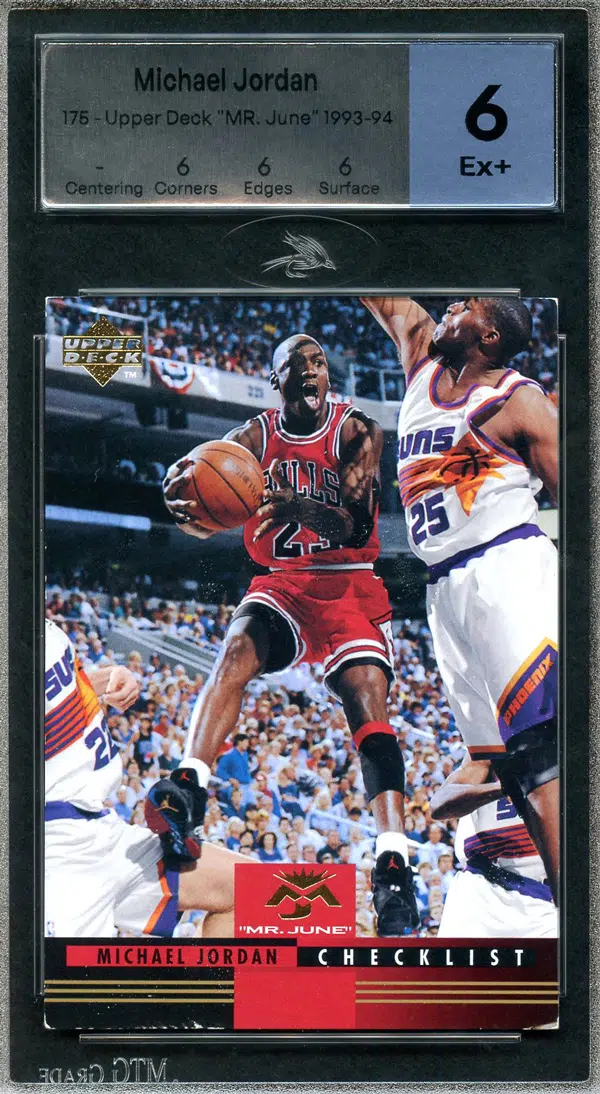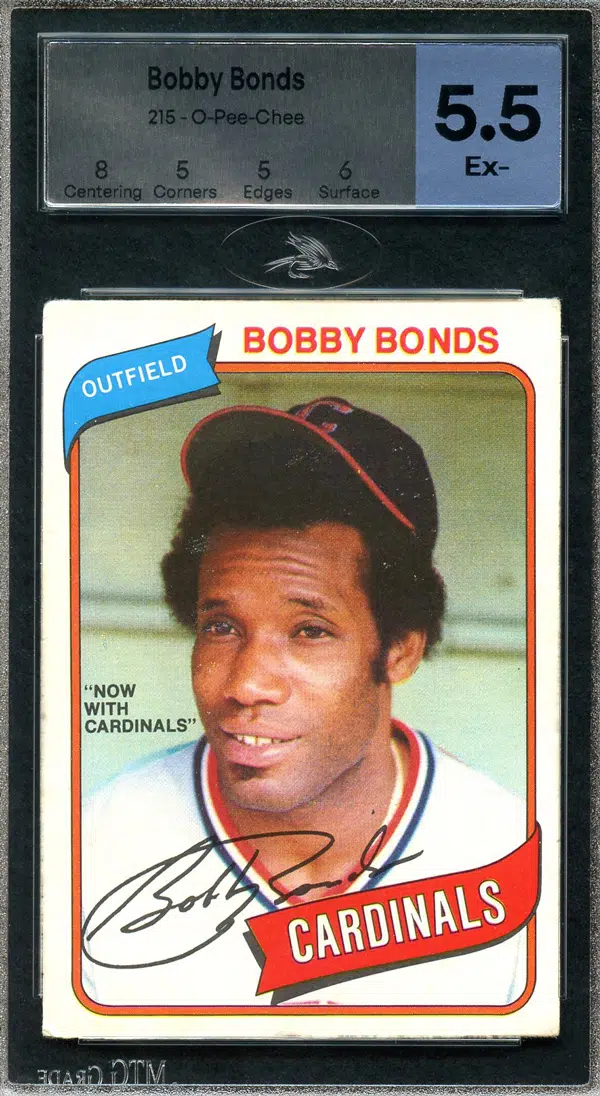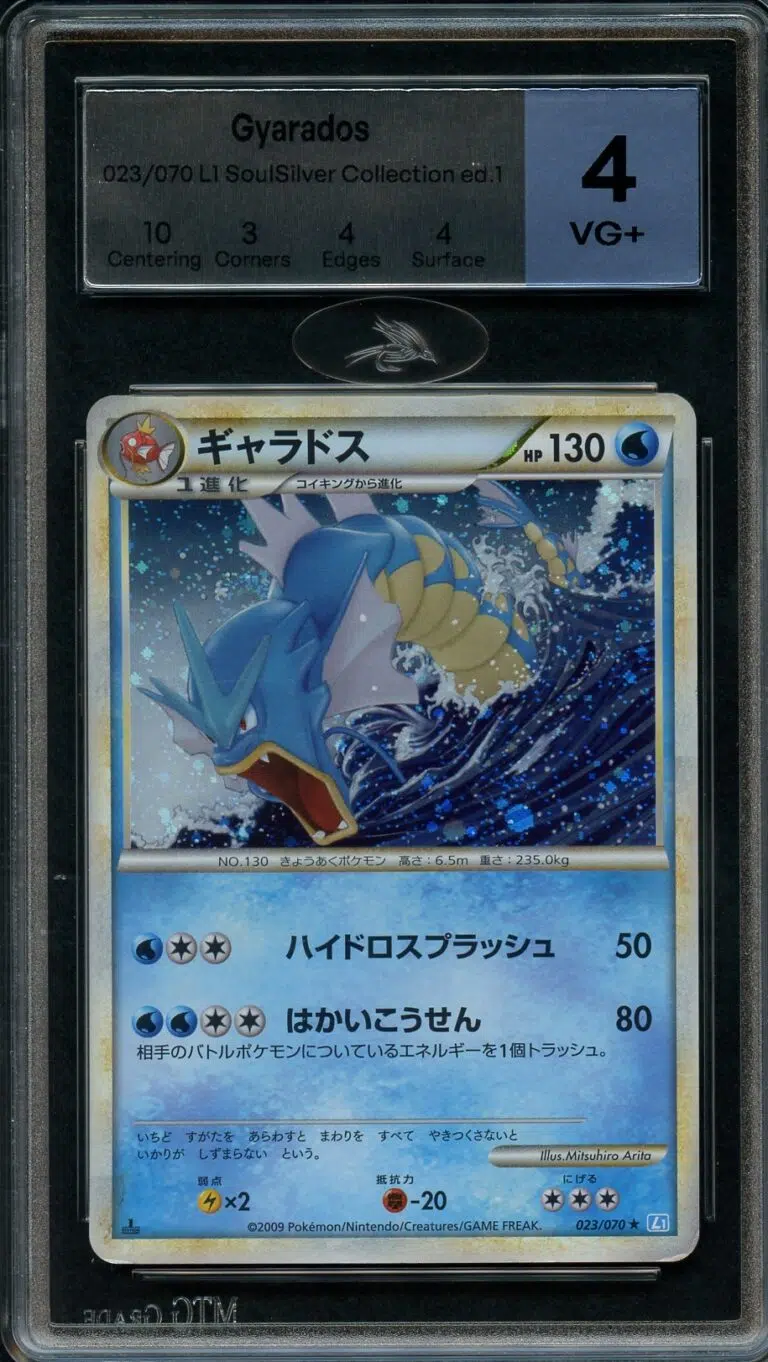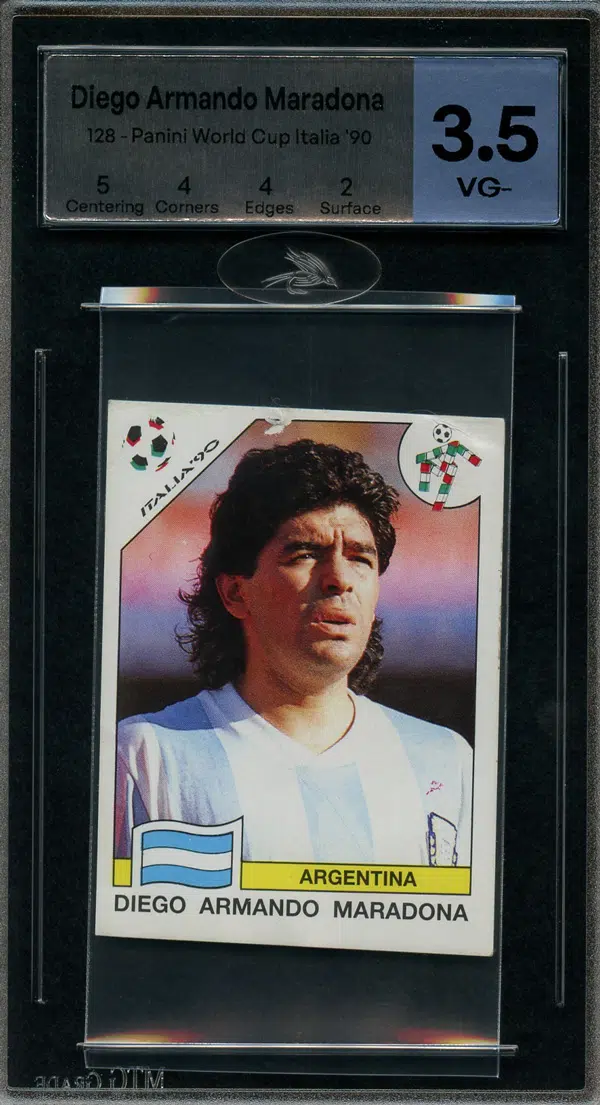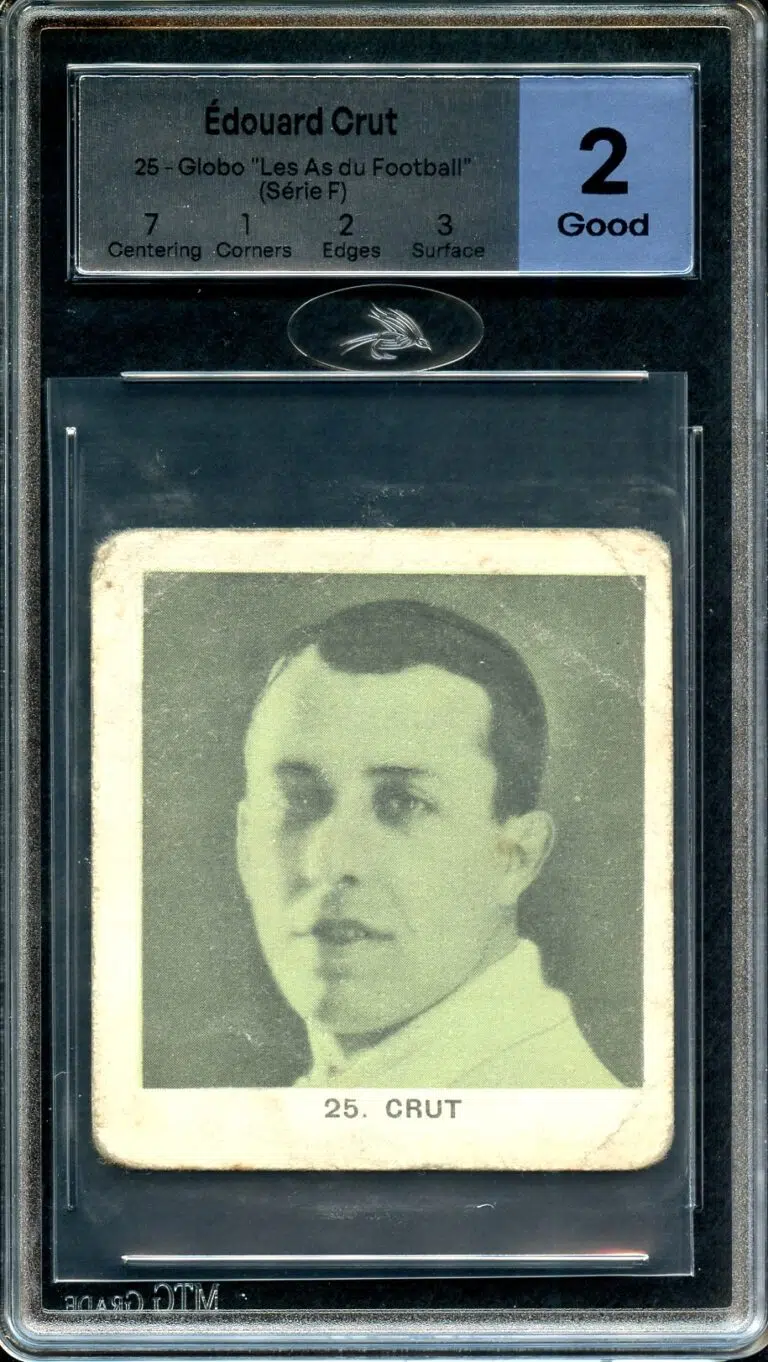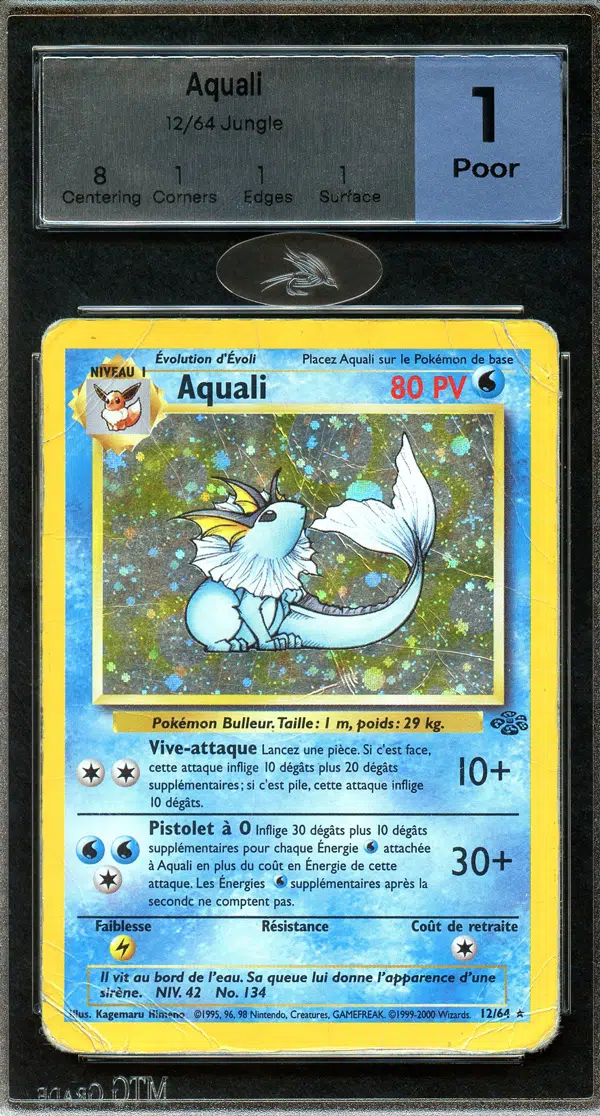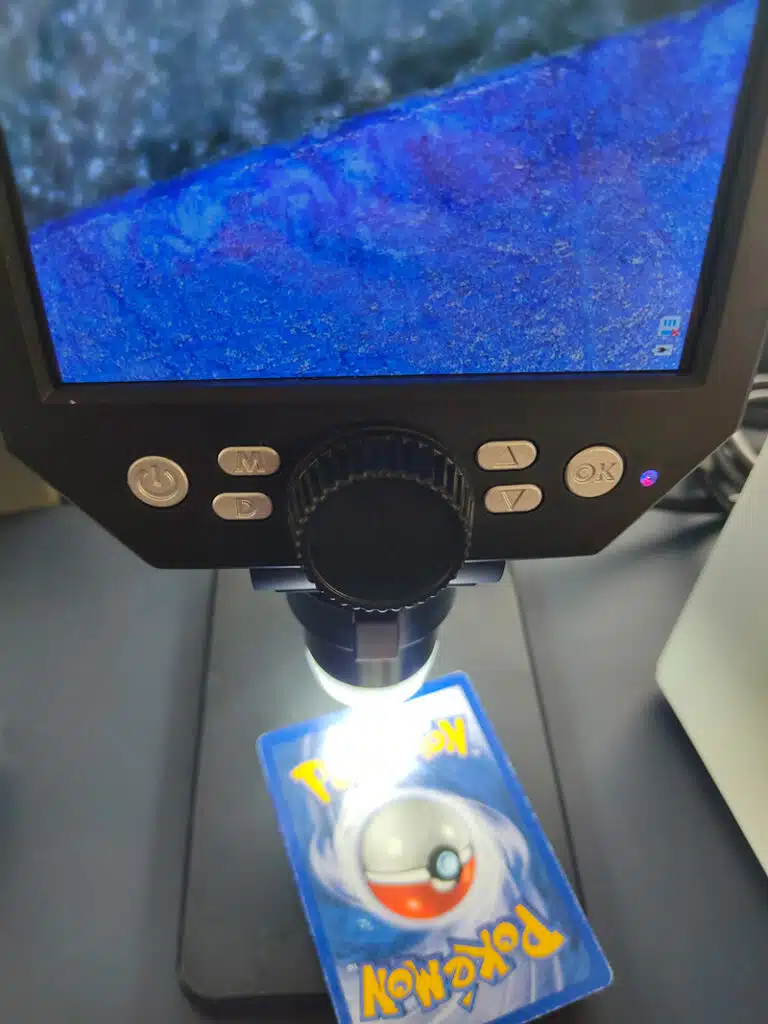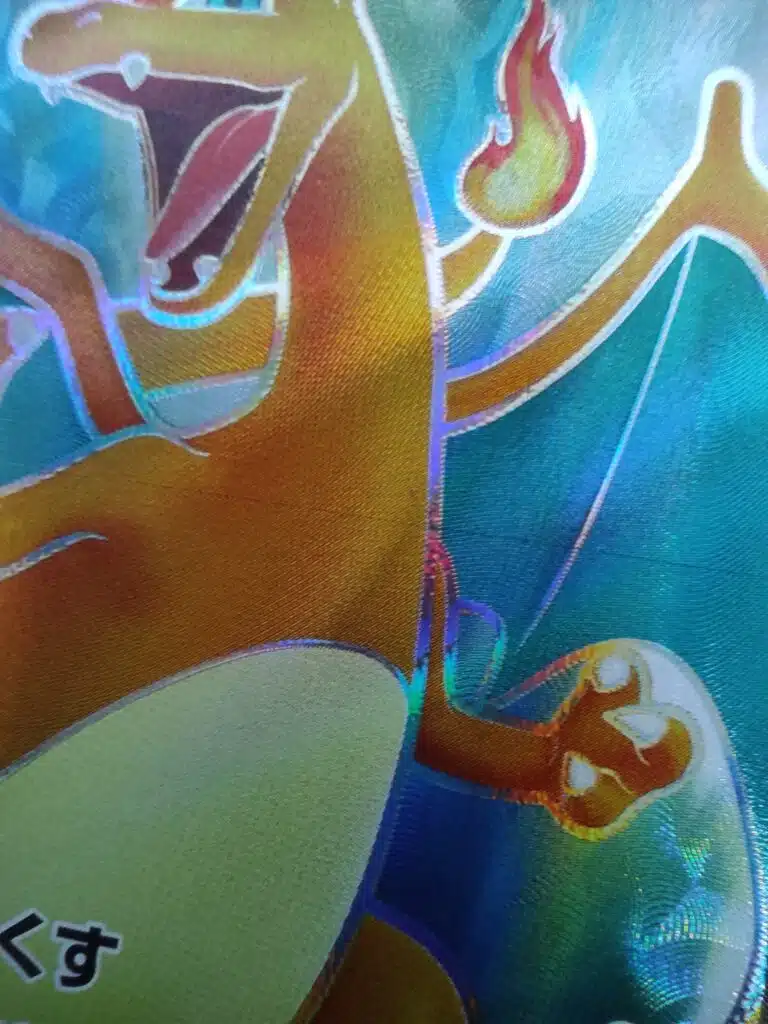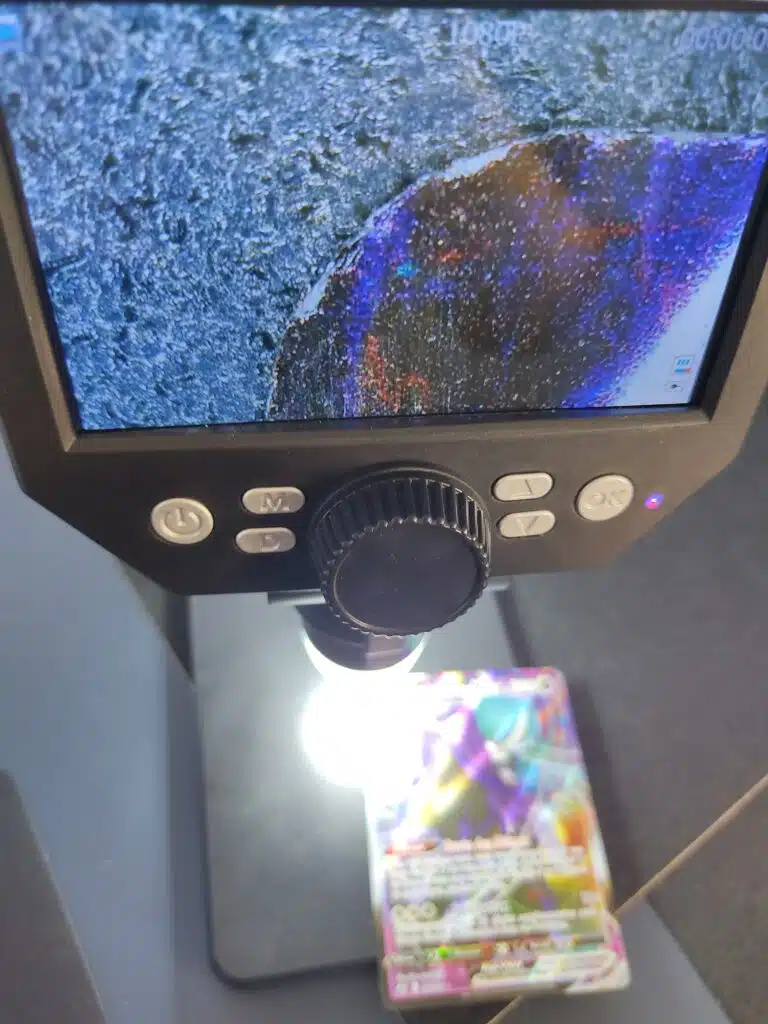Grading grid
Like the American references, MTG Grade uses a rating system ranging from 1 to 10. Notes for centering , corners , edges and surface are visible on the label above the card. These sub-notes are commonly referred to as “subgrades”.
MTG Grade also uses weighting to calculate the overall grade, which is not a mathematical calculation. For example, a card with 9/9/10/10 will have a grade of 9. As a general rule, centering will have less impact than the other scoring criteria on the overall score: a card with 7/10/8/10, for example, will have an overall score of 9/10. A defect on the front of the card can also, as a general rule, have more impact than a defect on the back. We take into account printing defects, such as print lines, which influence the overall score, but a weighting is also applied. Some cards (particularly sports cards) with no marked edges will not be given a centering score, so this criterion will not be taken into account.)
Grading follows a strict control process (more information on the grading page).
False cards will obviously not be noted or authenticated , and a non-certification report will be sent to you. This report may enable you to be reimbursed by the sales platform on which you purchased the card.
We also offer a simple card authentication service. After careful analysis, we certify that a card is genuine, give it an “A” for Authentique/Authentic and protect it in a case.
Our grading scale
10 Perfect
Perfect centering (50%-50%) front and back
A card that has never been played or moved, no marks on the front or back, no factory defects (white point, print line, etc.). A real gem!
9 Mint
Careful examination may reveal a minor flaw (micro-scratch, minor color defect, print line, white point, etc.), or the card may not be perfectly centered. A card in “Mint” condition is close to perfection.
8 Near Mint +
This condition may represent average production and/or distribution quality, generally characterized by whitened corners, irregular cutting, printlines or wear due to handling of the card, such as scratches on the surface, marks on the edges, sunken corners, etc. Even so, an NM+ card will be in perfectly acceptable condition, with no major defects.
7 Near Mint -
A card with a rating of less than 8 is a card with marked defects or wear marks, in addition to significant factory or non-factory defects. Common defects may be slight wear on several corners (front/back), minor scratches, marks on edges, print spots, scratches in the holographic effect, etc.
6 Excellent +
A card with visible marks on both sides that has been played, handled, rubbed or badly preserved.
Possible defects: marks on several corners, nicks on edges, silvering (shiny edges on front face), marked surface, etc.
5 Excellent -
Numerous, pronounced and clearly visible signs of wear on both sides of the card
Possible faults: wear on 4 corners, heavily scratched holo surface, pronounced silvering (shine on front edges), dents, marks, etc.
4 Very Good +
A card that has been heavily played or stored in poor conditions with marks on both sides. Possible defects: heavy wear on corners and surface, a slight tear, a surface fold may exist, several scratches on the front of the holo part or illustration, all 4 sides marked .
3 Very Good -
A map showing signs of serious deterioration. Possible defects: damaged corners, one or two marked folds, creasing of the card, soiling, discoloration, numerous white marks on the reverse, or black dots, etc.
2 Good
Despite the term “Good”, this is a card with major flaws. Possible defects: several signs of heavy wear, multiple folds, color imperfections or discoloration, surface scratches or tears, lack of all or part of the original gloss, etc.
Here are a few examples
Inked card
This card has blue pen marks on the edges, these marks were clearly made to hide defects, so it will only be authenticated and in “Inked” condition. Note that we dissociate this type of “deceptive” inking from accidental inking (the small stroke of felt-tip pen in the middle of the card, or ink on a sleeve that has rubbed off), to which we also give the “Inked” status, but which we note as
Print lines
This card has a clearly visible printline, a minor printing defect which is nevertheless quite frequent, but which will be included in the surface score. However, we weight this factory defect by not penalizing it with more than one point, even if the line is clearly visible or doubled.

